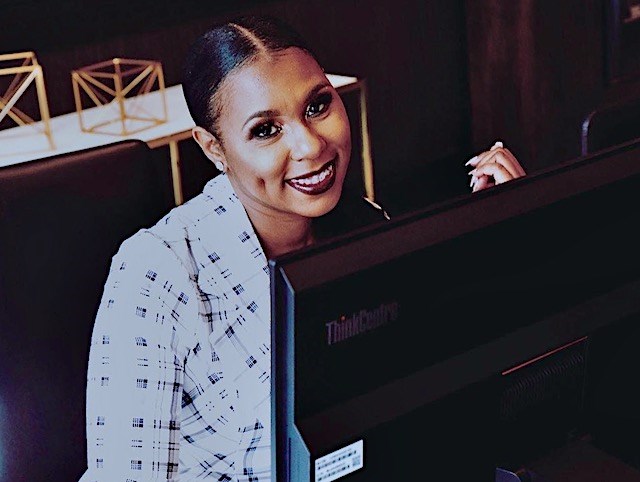
I was an eager and ambitious recent communications and journalism graduate from The Ohio State University.
I was excited to join the ranks of writers and storytellers of my community and share the lives of the people of my hometown. My bright-eyed enthusiasm would soon be slightly dimmed when I began my journey as a writer for a local community newspaper only to be met with skeptical eyes and heavy critiques as I traveled the cities’ suburbs writing about local elementary school parties, events and even Civil War reenactments.
Along my journey, I recall being stopped by a local Poland library security guard at the door and being asked, “Do you need anything?” during a silent book auction where I was the assigned reporter. When the administrator interrupted his inquiry and welcomed me into the event, the look on his face was a mixture of embarrassment and shock.
I was not the slightest bit surprised. This has become a sort of new normal for me navigating life as an African-American woman in a predominantly non-African-American space. This and many more instances of subtle racism are part of my experience as a journalist and communications professional.
Sadly enough, it is not a unique one. Storytelling remains the cornerstone of representation. However, statistics indicate that journalism still lacks racial diversity. Although the media industry has made exceptional strides in addressing its lack of racial inclusion, reports suggest that African-American voices are still underrepresented in newsrooms. According to Zippa.com, white journalists represent 69.9 percent of journalists in media, followed by 13.7 percent Hispanic and Latino, and only 7.5 percent for African-Americans.
Black storytelling is essential in capturing authentic and honest perspectives. If the media shapes the lens through which society views the world, then the absence of African-Americans creates a skewed framework. Threaded within every Black story lies a rich legacy of culture and history that left in the hands of other cultures cannot fully articulate the fullness of a community’s experience.
Black storytelling continues to create widespread success and influence across many industries, but Black creatives and writers still struggle to receive the adequate accolades and financial gain they deserve. As a writer and communication professional it is in my work that I am obliged to change that dynamic by ensuring cultural identity remains intact for the Mahoning Valley’s benefit.
As hopeful as I am, even today I must still deal with misconceptions of the value of what I bring to the table. At times this looks like fighting for equal compensation that reflects my expertise, having ideas and recommendations ignored, and my perspective often questioned and overlooked, or needing unnecessary oversight.\
Having to prove my capabilities beyond my education and accolades on paper that I can produce quality results is just as much part of my day-to-day responsibilities as research, editing and proofreading.
The benefit of diversity in media and communications
When content and media only encompass one biased view, it breeds a warped version of our community and the world we live in. The stories provided by African-American writers in media reflect a well-needed perspective that is more times than not left out of the conversation. Exposure to diverse voices brings forth fresh ideas and outlooks that create and explore authentic human experiences, emotions, challenges and more importantly, bring about change.
Cultivating diverse voices in the Mahoning Valley
The Valley is not a monolithic community. We are made up of people from all walks of life, ethnicities and backgrounds. However, can we honestly say, our media reflects that? It is up to us to welcome and cultivate connections with the public by commissioning communication efforts that are not one-size-fits-all. Attitudes, values and subtle cues dictate the way people perceive a message and require inclusivity for a comprehensive interpretation.
What this could look like in practice is providing a clear pathway of access to younger generations to media in schools and investing in African-American talent in media and company communications.
Race, equity, and inclusion have become a hot-button topic as of late, but to actually move the needle forward in the direction of a more unified Valley requires systemic action and accountability.
— Eartha Hopkins is a Youngstown native and an alumna of The Ohio State University. Born with a penchant for storytelling, the business owner and journalist offers a distinct voice with the goal to inspire her generation to live authentically. Be sure to catch her 2 cents on her website TheLiteraryHouse.co and Instagram @eartha__hopkins."Media" - Google News
October 28, 2021 at 03:11PM
https://ift.tt/3EvqvVT
AN INCLUSIVE TABLE | Exploring diversity in storytelling and media - Mahoning Matters
"Media" - Google News
https://ift.tt/2ybSA8a
https://ift.tt/2WhuDnP
Bagikan Berita Ini














0 Response to "AN INCLUSIVE TABLE | Exploring diversity in storytelling and media - Mahoning Matters"
Post a Comment